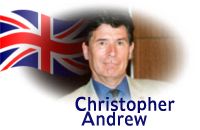Arnie Donahue, until 1997 the Chief of the C4I Branch in the National Security Division led by Don Gessaman, moved in retirement to the National Academy of Public Administraiton (NAPA) where he continued to engage in investigative surveys at the classified level. Below is one of the first reports that he helped administer. It makes the important point that information that is collected, processed, produced, and exploited by both producers and consumers of intelligence cannot be “isolated” into a single agency. It must be handled as a grid or service of common concern. This reference was among the first to suggest to us that Open Source Intelligence (OSINT) is a “hybrid” in that is is an intelligence discipline in its own-right, with its own Human, Signals, Imagery, and other sub-components; it is a targeting and validation and contextual sub-element of each of the traditional classified intelligence collection elements (through badly abused and not at all understood by any of them), and finally, it is a consumer-driven source of first resort that has special cachet when shared in a multinational fashion. Geospatial information is OSINT on steroids–so fundamental across so many boundaries that on the one hand, the reports suggests the need for the inegration of the U.S. Geological Survey and the National Geospaital Agency, while also recognizing that like air and water, geospatial data can be used but not controlled.










